Project management methodologies provide a consistent, structured approach to managing projects, reducing risks, and increasing the likelihood of project success. But with so many different options, how do you know which one to choose for your industry or environment?
In this guide, we’ll cover the best project management methodologies and frameworks used today, their differences, and how to choose the right one for your project. Plus, we’ll also show you how the flexible monday work management platform lets you adopt any methodology.
Get startedWhat is a project management methodology?
A project management methodology is a set of guiding principles, processes, and practices for planning, executing, and overseeing projects. The goal is to provide a consistent, repeatable approach to deliver projects successfully. Typically, a project management methodology includes:
- A structured framework for managing projects
- Defined processes and workflows
- Guidelines for project planning, execution, and control
- Tools and techniques for managing time, cost, quality, and resources
- Approaches for communication and stakeholder management
What is the difference between a project framework and methodology?
A project framework provides a broad, flexible structure for organizing project activities. It:
- Offers guidelines and principles rather than strict rules
- Allows for adaptation and customization based on project needs
- Focuses on the overall structure and relationships between project elements
- Provides a high-level conceptual model for project management
On the other hand, a project methodology is more prescriptive and rigid in its approach. It:
- Offers a specific, detailed set of processes, tools, and techniques
- Provides step-by-step instructions for executing project tasks
- Focuses on the “how” of project execution
- Aims to ensure consistency and standardization across projects
The key differences between them are highlighted in the table below:
| Frameworks | Methodologies | |
|---|---|---|
| Level of detail: | Higher-level and less detailed | More granular and specific |
| Flexibility: | More room for adaptation | More rigid and prescriptive |
| Application: | Often preferred by experienced project managers who can fill in the details | Helpful for beginners who need more guidance |
| Performance metrics: | Harder to develop and implement specific performance metrics | Typically spell out detailed performance guidelines |
| Compatibility: | Easier to incorporate other practices and tools | Generally less flexible |
While frameworks and methodologies have distinct characteristics, they are not mutually exclusive. In practice, many project managers use a combination of both and adapt them to suit the specific needs of their projects and organizations.
Why are there so many different project management methodologies?
The abundance of project management methodologies reflects the complex and varied nature of projects across different industries and organizational contexts. This diversity allows project managers to select or adapt the approach that best fits their specific project requirements and constraints.
Here are some of the reasons why numerous project management methodologies have evolved.
Diverse project types and industries
Different industries and project types have unique requirements, leading to the development of specialized methodologies. For example:
- Software development projects often use Scrum or other Agile frameworks due to their iterative nature.
- Construction projects may rely on the Critical Path Method (CPM) for precise scheduling.
- Manufacturing industries might prefer Lean or Six Sigma approaches to minimize waste.
Evolving business needs
As business environments change, new methodologies emerge to address contemporary challenges. For instance:
- Agile methodologies developed in response to the need for flexibility in fast-paced industries.
- Kanban arose from the need for continuous workflow improvement in manufacturing.
Technological advancements
New technologies enable different approaches to project management. For example:
- Digital tools have made methodologies like Scrum more feasible to implement across distributed teams.
- Data analytics capabilities have enhanced methodologies focused on continuous improvement.
Organizational culture
Companies develop or adapt methodologies to align with their specific culture and values. For instance:
- Some organizations prefer highly structured approaches like PRINCE2.
- Others may opt for more flexible frameworks that allow for greater team autonomy.
Continuous improvement
Project management professionals constantly strive to refine and improve existing methods. For example:
- Hybrid methodologies combine elements from different approaches to address changing needs.
- New methodologies often emerge as refinements or reactions to perceived shortcomings in existing ones.
Market differentiation
Finally, project management consultancies and training organizations sometimes develop proprietary methodologies to differentiate their services in the market. For example, the Project Management Institute (PMI) created the PMBOK methodology.
Why use one of these project management methodologies?
There are several compelling reasons to use project management methodologies.
Standardized approach
Project management methodologies provide a consistent, structured approach to managing projects, which helps:
- Standardize processes and roles across the organization
- Improve the decision-making process and ensure accountability
- Build a common language and understanding of project management
- Reduce miscommunications and misunderstandings
Improved efficiency and productivity
Using a methodology can significantly boost efficiency and productivity as it:
- Streamlines project processes
- Clearly defines roles and responsibilities
- Sets well-defined objectives and timelines
- Improves communication and collaboration
Using a tried and tested method means you can accurately plan the project initiation phase and the overall project timeline and budget from the start. You can also incorporate lessons learned from other projects, increasing the chance of success.
Better risk management
Project management methodologies typically include processes for identifying and mitigating risks, which:
- Helps anticipate potential issues
- Allows for proactive risk mitigation
- Improves problem resolution when issues do occur
Increased project success rates
By providing a structured approach, methodologies can:
- Reduce project failures
- Improve the quality of deliverables
- Help deliver projects on time and within budget
According to the PMI:
Following a project management methodology makes it almost 20% more likely the project will deliver what it’s supposed to.
Enhanced stakeholder satisfaction
Using a project management methodology can lead to:
- Improved client satisfaction through clearer expectations
- Better alignment with stakeholder needs
- More predictable project outcomes
Continuous improvement
Many project management methodologies incorporate processes for:
- Implementing best practices
- Gathering feedback and lessons learned
- Continuously refining and improving project management approaches
Optimized resources
Project management methodologies often include techniques for:
- Balancing and allocating resources effectively
- Maximizing resource utilization
- Reducing waste and inefficiencies
How to choose the right project management methodology
Aside from understanding the pros and cons of each methodology, considering these key factors can help you decide on your ideal approach.
1. Project requirements
The first question to answer is whether you need to define project requirements upfront as part of a scope statement or shape them throughout the project. Assess the specific needs of your project, including:
- Scope and complexity
- Timeline and deadlines
- Budget constraints
- Quality requirements
- Flexibility needed for changes
Your answer will influence the project management methodology you choose. For example, projects with well-defined, fixed requirements may suit a Waterfall approach, while those with evolving needs may benefit from Agile methodologies.
2. Team capabilities
Some methodologies require specific skills or training, so ensure your team can effectively implement the chosen approach. Evaluate your team’s:
- Skills and experience
- Preferred working styles
- Familiarity with different methodologies
3. Culture
You’ll need to identify the client’s or your organization’s non-negotiables. For example, you’ll need a different approach if the project scope needs to be tightly controlled, but time and budget aren’t set in stone, compared to when time and budget are fixed, but the end deliverable can be more flexible.
Align the methodology with the organization’s:
- Existing processes and tools
- Risk tolerance
- Decision-making structure
- Industry standards and regulatory requirements
4. Stakeholder involvement
Consider the level of stakeholder engagement required. For example, How does the client expect to work with the project team? Will they be close to the project and on-hand throughout to make decisions and offer direction? Or do they want to provide all that at the start and then let the project run with minimal input?
Make sure you understand the:
- Frequency of feedback needed
- Client/stakeholder desire for involvement
- Need for regular demonstrations or reviews
For example, Agile methodologies often emphasize frequent stakeholder interaction, while Waterfall has less frequent touchpoints.
5. Risk management
Consider how different methodologies address risk:
- Frequency of risk assessments
- Ability to adapt to identified risks
- Risk mitigation strategies
6. Tools and resources
Evaluate the tools and resources available to support different methodologies:
- Project management software
- Collaboration platforms
- Reporting and tracking tools
By carefully considering these factors, you can select a project management methodology that best aligns with your project’s needs, team capabilities, and organizational context. Remember that hybrid approaches that combine elements from different methodologies can also be practical for some projects.
If you still need to decide which methodology to use, we’ve gathered the top project management methodologies and frameworks below, explaining each in depth.
20 project management methodologies and frameworks (with examples)
Let’s examine the various project management methodologies and frameworks.
Agile methodology
Agile is an umbrella term that encompasses several different project management frameworks, such as Scrum, but it’s worth mentioning a few more details here.
It rejects rigid planning and says that teams need to operate flexibly and iteratively. Meaning you don’t “do it once, and do it right” — instead, you work on something small and execute it quickly, evaluate what’s working and what’s not, and then change and adapt from there.
Agile accepts uncertainty as a given and aims to empower project teams to be super flexible, execute their work quickly, and respond to change without a hitch. This could be a disadvantage to teams working with a tighter budget or timeline because the Agile method can feel fraught with unpredictability.
It also requires close and frequent communication—which is made easier with a platform like monday work management, where teams can communicate clearly across your organization. Here’s an idea of what Agile planning looks like on the software:
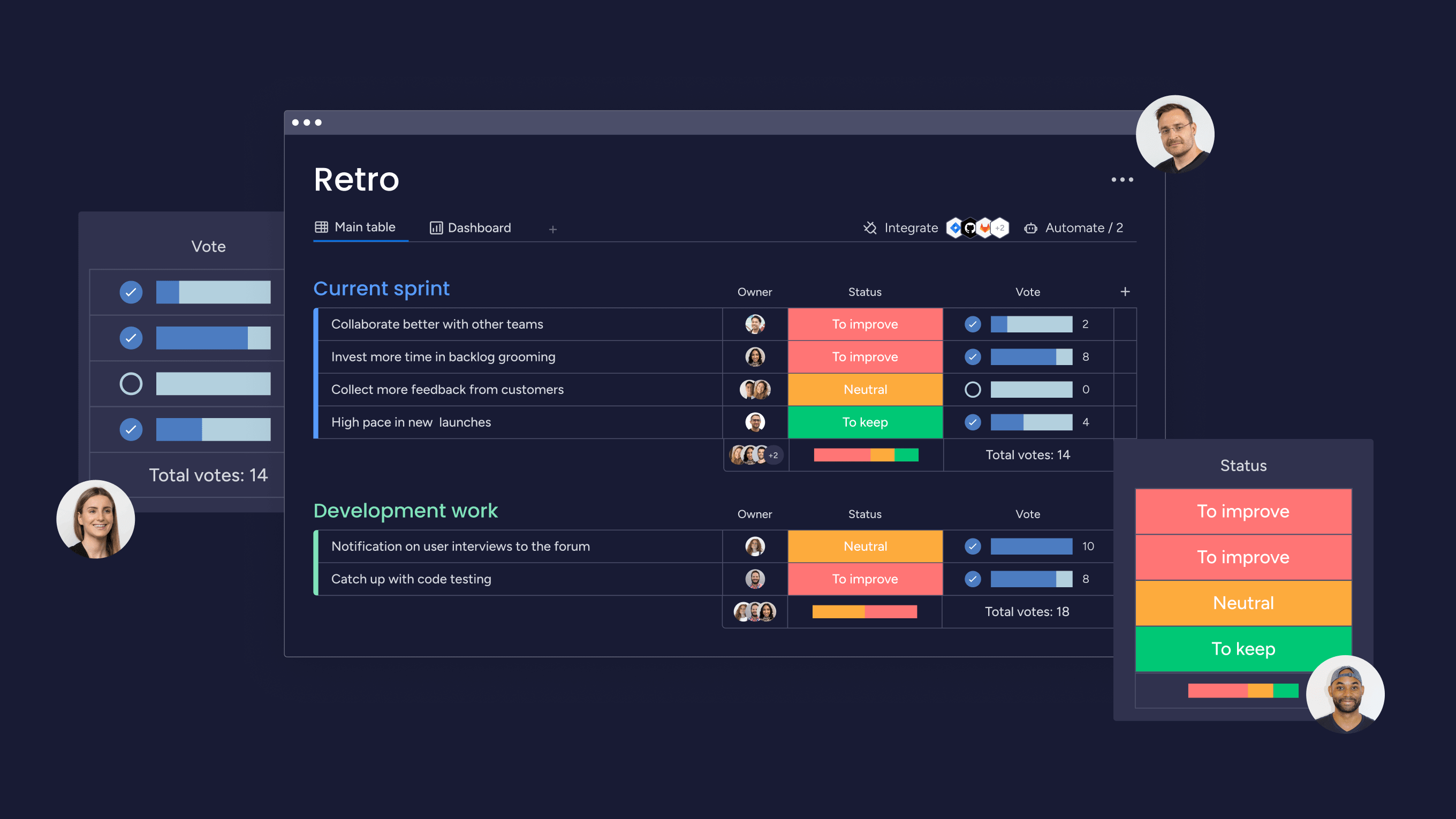
When to use Agile
The Agile project management methodology works best when the product vision or features don’t need to be well-defined. Agile allows product owners to tweak requirements and priorities throughout the project to take advantage of opportunities and ultimately deliver a better product to all of the project stakeholders.
Here are some advantages and disadvantages of the Agile methodology:
| Pros | Cons |
|---|---|
| Best for projects when only the high-level requirements are known initially | Budget or time constraints may mean not all project deliverables are met |
| Stakeholder engagement is frequent and collaborative, increasing the chance of successful implementation | Collaboration can be challenging if the project team and business aren't co-located |
| Learning occurs throughout, so processes and approaches can be continuously improved | Prioritizing the backlog can be challenging if stakeholders aren't in agreement |
| Benefits are realized throughout project delivery | Harder to determine when critical resource may be required |
Waterfall methodology
The Waterfall methodology is an old-school approach that asks project managers to list all the tasks that lead to the end goal and work on them in order. Progress cascades downwards from one phase of the project to the next.
Teams must complete each before moving on to the next. It’s ideal for anyone who makes pricier, physical products in a repetitive process. And, in terms of smaller endeavors, if you’re an excellent planner working on a project with clear scope and requirements, the Waterfall method can help you achieve a successful, predictable result.
However, it’s quite a rigid approach to project management. It assumes you have all the requirements upfront and doesn’t account for any surprises that force you to deviate from the plan. For most teams, this isn’t a realistic way to work.
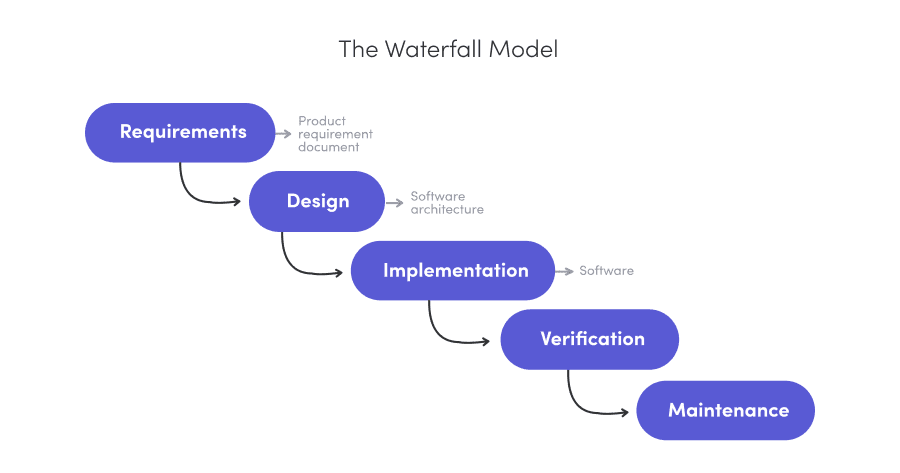
When to use Waterfall
Waterfall project management works best for projects with long, detailed plans that require a single timeline. It works best in a less volatile project environment where you can get an upfront investment from the client to ensure a high level of certainty around the final deliverables.
Check out some of the advantages and disadvantages of the Waterfall methodology:
| Pros | Cons |
|---|---|
| Works well when the requirements are clear from the start of the project | Time and money has to be committed early to support the planning phase |
| Project risk is anticipated from the beginning allowing time for mitigation | Agreed changes in scope can be slow to implement and affect the project timeline |
| Best if critical resource has limited availability | Accidental scope creep adds effort and cost, decreasing the project value, so controls must be effective |
| Roles and responsibilities are defined early reducing the risk of misunderstandings or gaps in delivery | Project value can only be realized at the end of the life cycle |
PRINCE2
PRINCE2 stands for Projects IN Controlled Environments and is one of the process-oriented Waterfall project management frameworks that emphasizes clear steps and well-defined responsibilities.
It heavily emphasizes planning, business justification, cost analysis, and risk mitigation and is a comprehensive framework for running large and predictable enterprise projects.
PRINCE2 is also one of the world’s most widely practiced project management frameworks, which means many people are familiar with it, know how it works, and understand its terminology.
It’s a tried-and-true classic for mapping out stages of a large-scale project from start to finish, clarifying what will be delivered, by whom, and when. It’s also relatively rigid and poses challenges similar to most Waterfall projects.
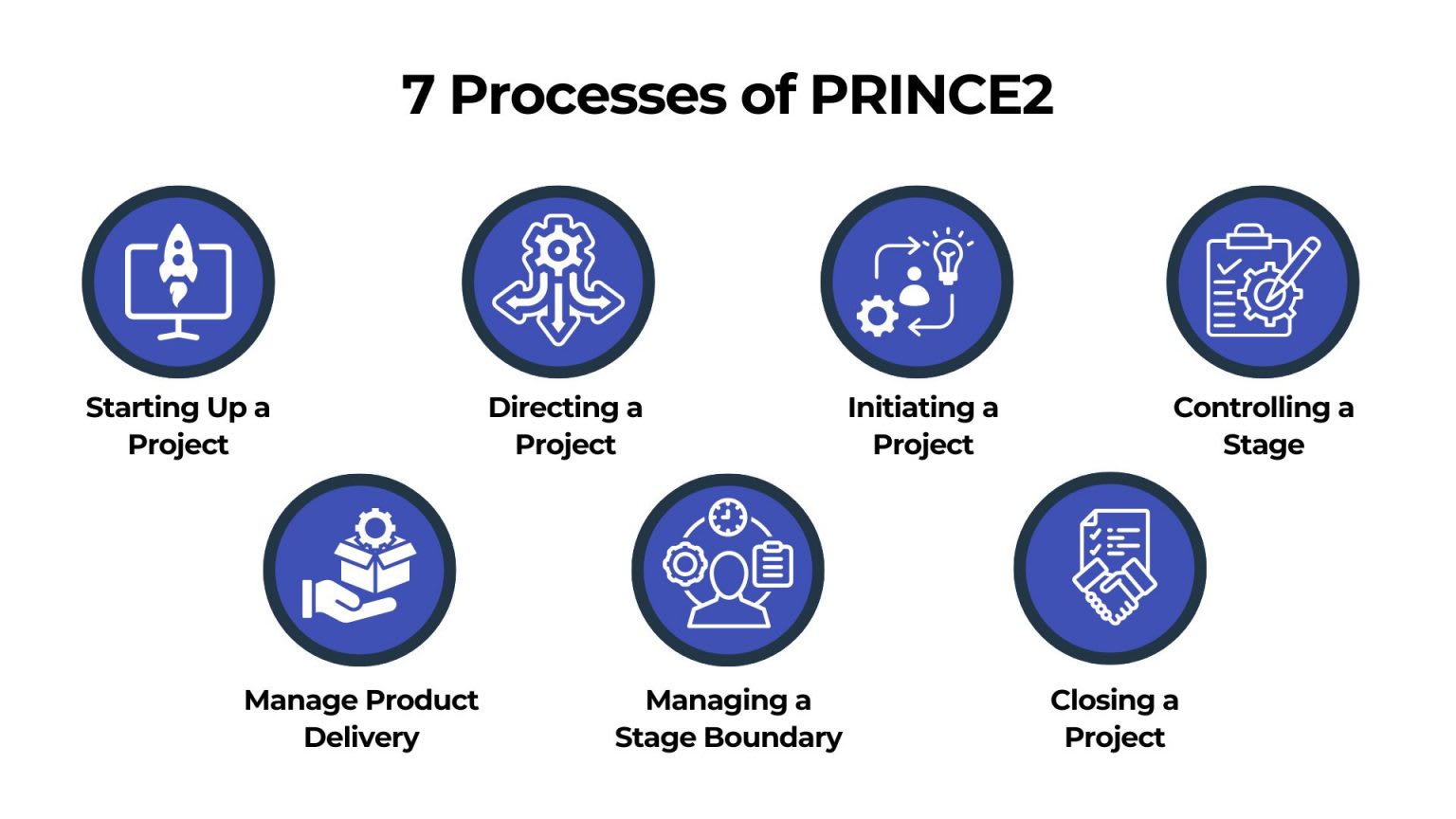
When to use PRINCE2
PRINCE2 is widely used in government projects in countries like the UK, Australia, and Europe and is best suited to:
- Projects requiring strict control and governance
- Large projects with complex stakeholder environment
- Organizations seeking a standardized approach to project management
PMBOK
Created by the Project Management Institute (PMI), PMBOK stands for Project Management Body of Knowledge. The framework of best practices organizes project management into five process groups:
- Initiating
- Planning
- Executing
- Monitoring and Controlling
- Closing
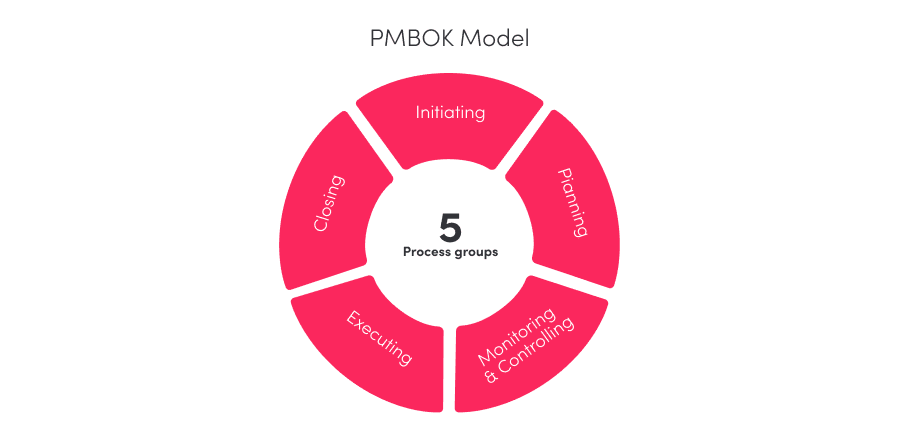
Although the PMBOK Guide doesn’t dictate methodology, many software project managers associate it with the Waterfall model. Just as there isn’t a PMI methodology — it provides project management practices and guides — PMBOK leaves it up to teams to decide which processes best suit their situation.
When to use PMBOK
You can use PMBOK in various situations, but it’s particularly beneficial for projects requiring standardization, clear communication, detailed planning, and adherence to established project management practices. It’s less suited for highly agile or flexible project environments.
Scrum
Scrum is the Agile project management framework of choice for most product development teams today.
Scrum is famous for buzzwords such as “sprints,” “retrospectives,” “backlogs,” and “burndowns.” With Scrum, you don’t focus on projects per se, but on time — e.g. what can you achieve as a team in the next two weeks?
Small teams (no more than nine people) divide work into two-week milestones known as “sprints” or “iterations.” They hold a Daily Scrum meeting, led by a Scrum Master, to discuss where things stand.
The Scrum Master acts as a facilitator to clear away obstacles and help the team work more efficiently. This Agile approach is great for creative projects where you can modify goals midway without derailing the entire project. Take a look at this example sprint management board:
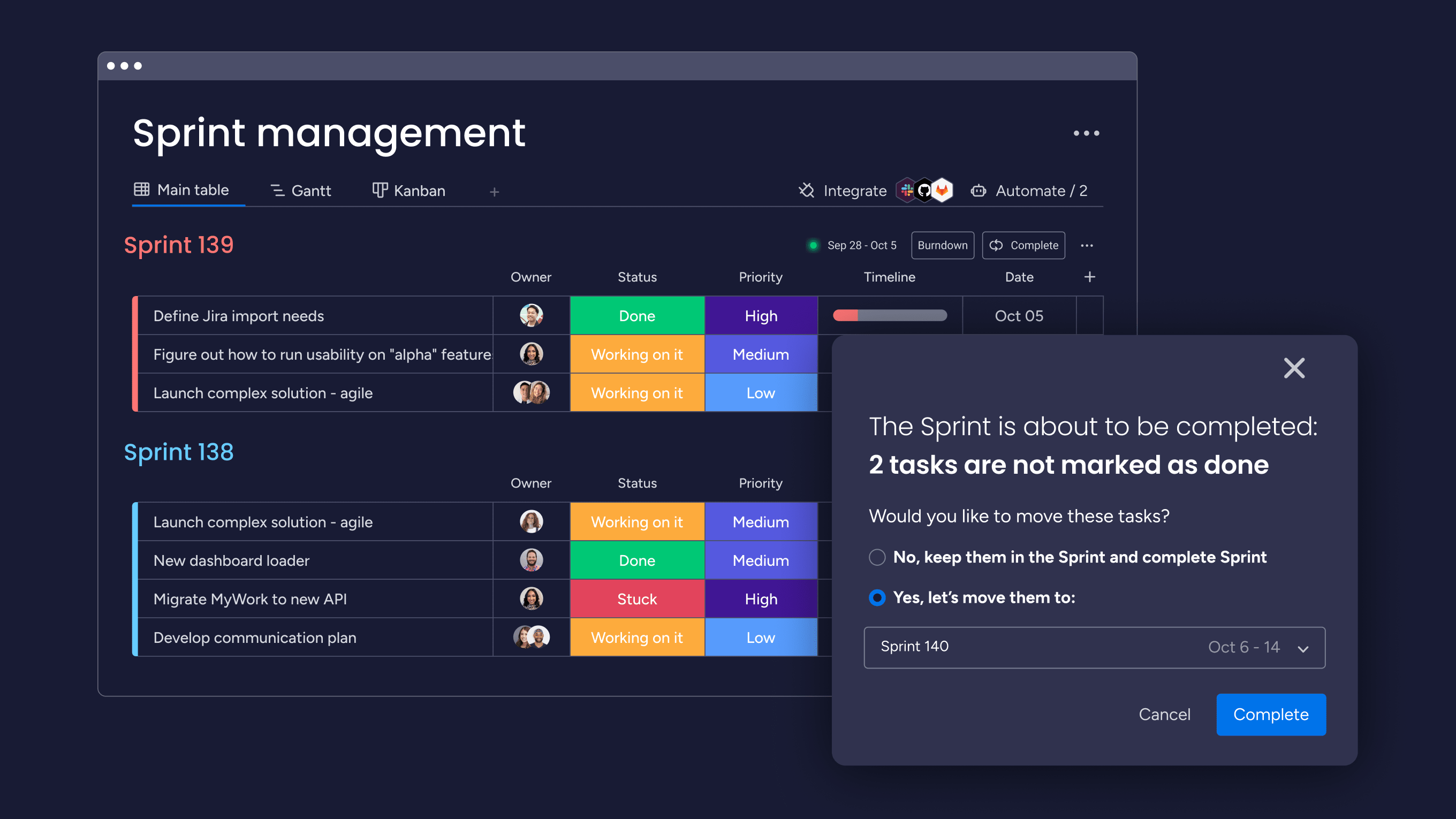
When to use Scrum
The Scrum framework is particularly effective for:
- Complex projects with evolving requirements
- Software development and product creation
- Teams that can self-organize and work collaboratively
- Organizations seeking to improve agility and responsiveness
By providing a structured yet flexible approach, Scrum enables teams to deliver value iteratively and adapt quickly to changing needs.
Lean
Lean project management focuses on maximizing value while minimizing waste. It aims to deliver more value to customers with fewer resources. It originated from the Toyota Production System (TPS), which aims to eliminate the three types of deviations: Muda (waste), Mura (unevenness), and Muri (overburden).
Lean project management aims to systematically eliminate all forms of waste — like excessive documentation, unproductive meetings, avoidable rework, etc. — so you’re working as efficiently as possible. It encourages you to strip away all the fluff of your day-to-day so you’re only left with the essentials that deliver real value.
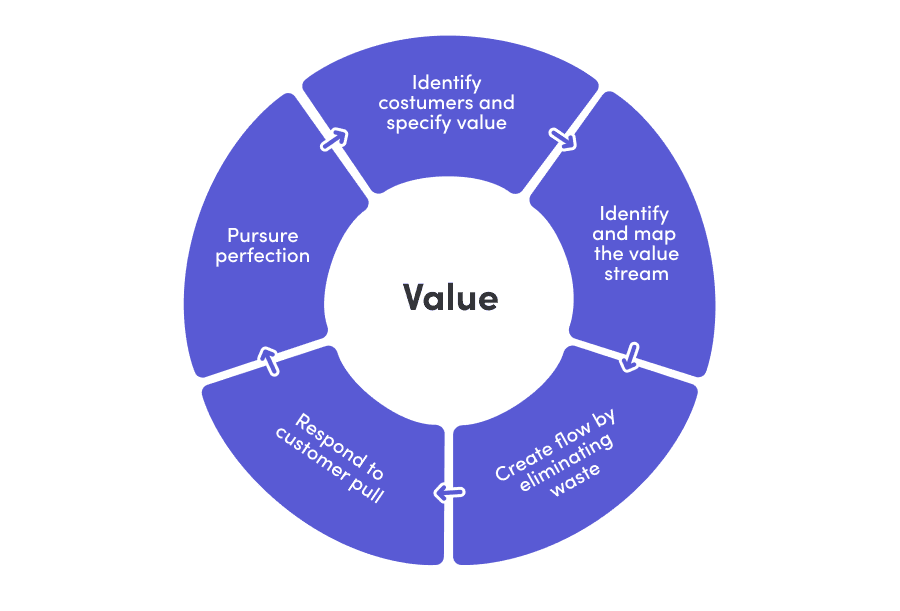
When to use Lean
Lean project management is ideal for situations where increasing efficiency, reducing waste, and continuously improving processes are primary goals. It’s particularly effective in environments that can benefit from streamlined workflows and a focus on delivering customer value.
Kanban
Kanban is a popular project management framework that agile teams use to visualize workflow and maximize efficiency. Like Agile, it was specifically developed for software development, but you can apply it to any workflow that follows a predictable process.
The Kanban board lets you visually manage processes with several columns representing stages in your workflow. The stages could be as simple as “To-do,” “Working on it,” and “Done,” or far more complex, as tailored to your process.
You then represent work via cards or sticky notes, moving them from left to right as they progress through your workflow—this way, you can easily evaluate points of inefficiency: where are sticky notes building up?
People love Kanban’s simplicity and flexibility, but you need to factor in more time to strategize and plan. And, you focus on what’s urgent, which may differ from what’s essential. In addition, many projects follow non-linear processes that a flat, single-layer display can’t manage.
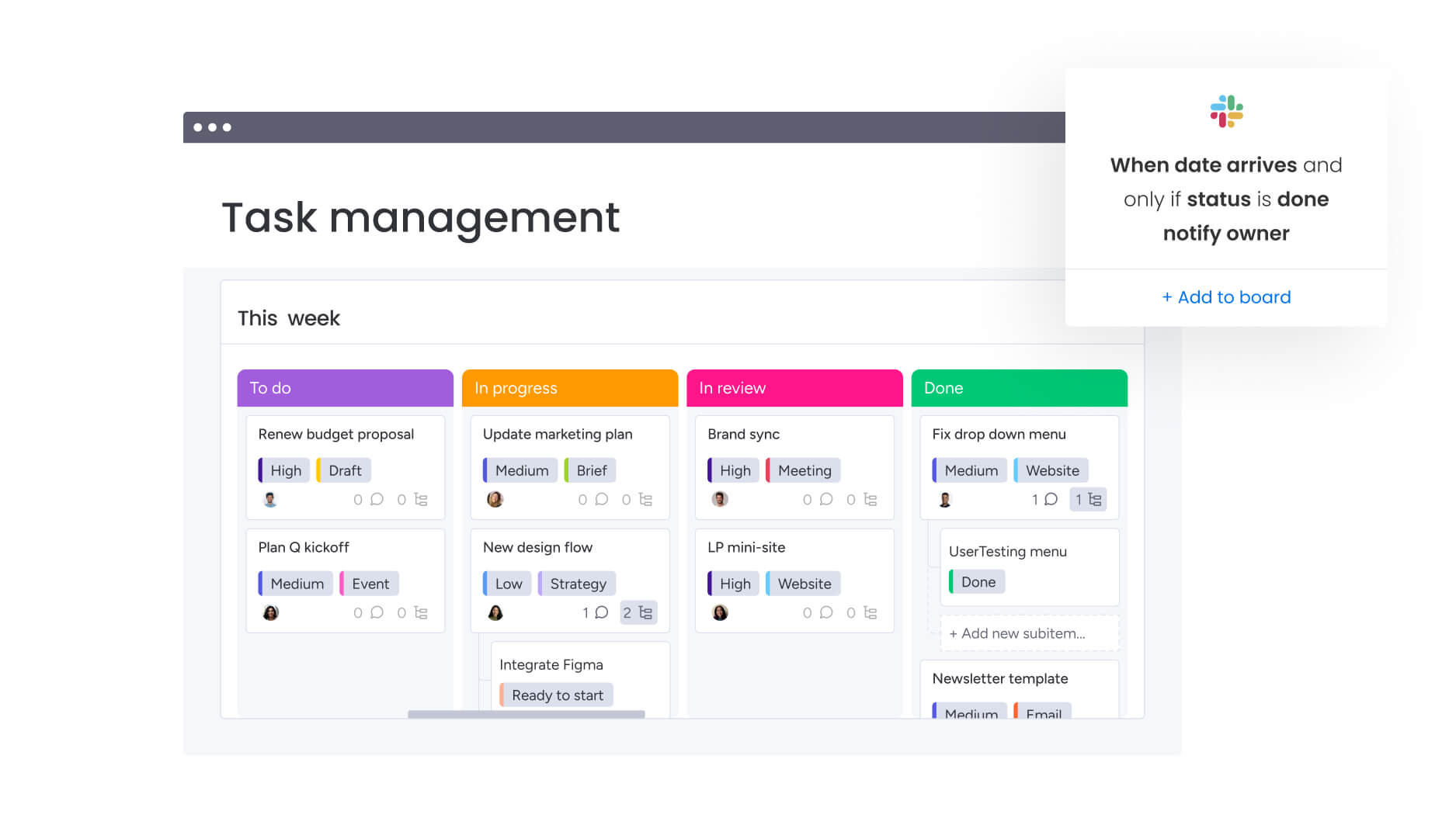
When to use Kanban
Kanban is ideal for teams and projects that benefit from visualizing work, improving flow, and continuously optimizing processes, such as:
- Software development and IT projects
- Marketing and content creation
- Product development
- Customer support
It may be less suitable for:
- Highly complex projects with many dependencies
- Situations requiring extensive upfront planning
- Projects with fixed timelines and deliverables
Critical Path Method (CPM)
The Critical Path Method (CPM), also known as Critical Path Analysis (CPA), is a project management technique used to identify the most critical tasks and determine the minimum time needed to complete a project.
A critical path is the longest sequence of dependent tasks that must be completed to execute a project. The CPM identifies the critical path and measures the time required to complete them from start to finish to determine the shortest possible project duration.
For example, the critical path below highlights the housebuilding activities that take the longest to complete.

CPM helps project managers optimize schedules, allocate resources efficiently, and ensure timely project completion.
When to use CPM
CPM is particularly effective for:
- Projects where time is a critical factor
- Projects with well-defined tasks and durations
- Complex projects with numerous interdependent activities
- Construction, engineering, and manufacturing projects
Six Sigma
Six Sigma is a data-driven methodology used to improve business processes by reducing defects and variability. The initial idea, introduced in the 1980s at Motorola, was to produce products with virtually no defects — specifically, 3.4 defects per million products or, in statistical modeling terms, Six Sigma.
Although it started in manufacturing, many other businesses like Amazon, Xerox, and Bank of America have used Six Sigma to save money by improving efficiency. You can use Six Sigma to optimize and improve existing processes or create new ones.
Use the DMAIC methodology to improve existing processes:
- Define the problem and project goals
- Measure current process performance
- Analyze data to find root causes of defects
- Improve the process
- Control the improved process
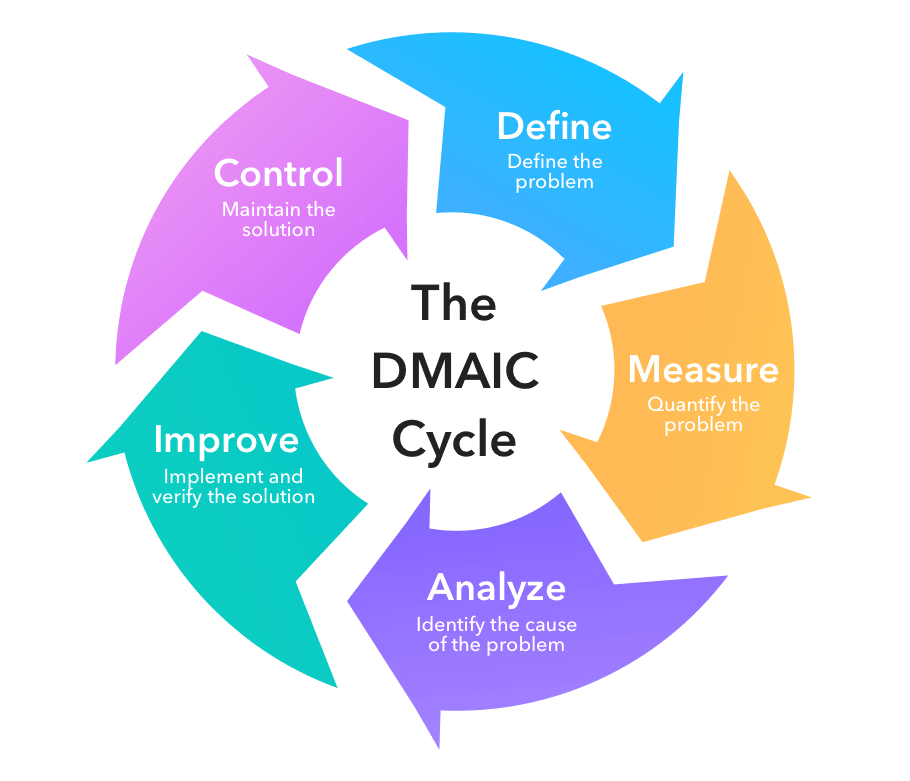
Use the DMADV methodology for creating new processes or products:
- Define project goals
- Measure critical components
- Analyze data and develop designs
- Design details
- Verify the design
By incorporating Six Sigma methodologies, project managers can enhance their ability to deliver high-quality projects efficiently and effectively.
When to use Six Sigma
Six Sigma is particularly effective for:
- Projects aiming to reduce defects and variability
- Processes with measurable inputs and outputs
- Organizations seeking to improve quality and efficiency
- Industries like manufacturing, healthcare, and finance
Extreme Programming (XP)
Extreme Programming (XP) is an agile software development methodology that emphasizes the rapid delivery of high-quality software through frequent iterations and continuous feedback. XP emphasizes simplicity, communication, feedback, courage, and respect to create a highly productive and adaptive development environment.
When to use XP
XP is particularly effective for:
- Projects with changing requirements
- Smaller development teams (2-12 people)
- Object-oriented projects
- Situations requiring close collaboration with customers
- Environments open to frequent testing and feedback
Extreme Project Management (XPM)
Extreme Project Management (XPM) is a flexible and adaptive project management methodology designed for highly dynamic and ambiguous projects with uncertain requirements and outcomes.
Unlike traditional project management methodologies, XPM prioritizes rapid delivery and stakeholder satisfaction over strict adherence to initial plans, well-defined project scope, and precise time estimates. In other words, it emphasizes human factors over formal processes.
When to use XPM
XPM is particularly effective for:
- Projects with changing or unclear requirements
- Fast-paced, complex environments
- Creative and innovative projects such as software development and marketing campaigns
- Small teams with minimal hierarchy
- Situations requiring quick decisions and adaptability
Scrumban
Scrumban is a hybrid project management methodology that combines elements of two popular Agile frameworks: Scrum and Kanban. It combines the time-boxed structure of Scrum with the flexibility and visualization of Kanban to create a unique yet complementary framework that leverages their strengths in a single approach. So, you might see Scrum sprints on Kanban boards:
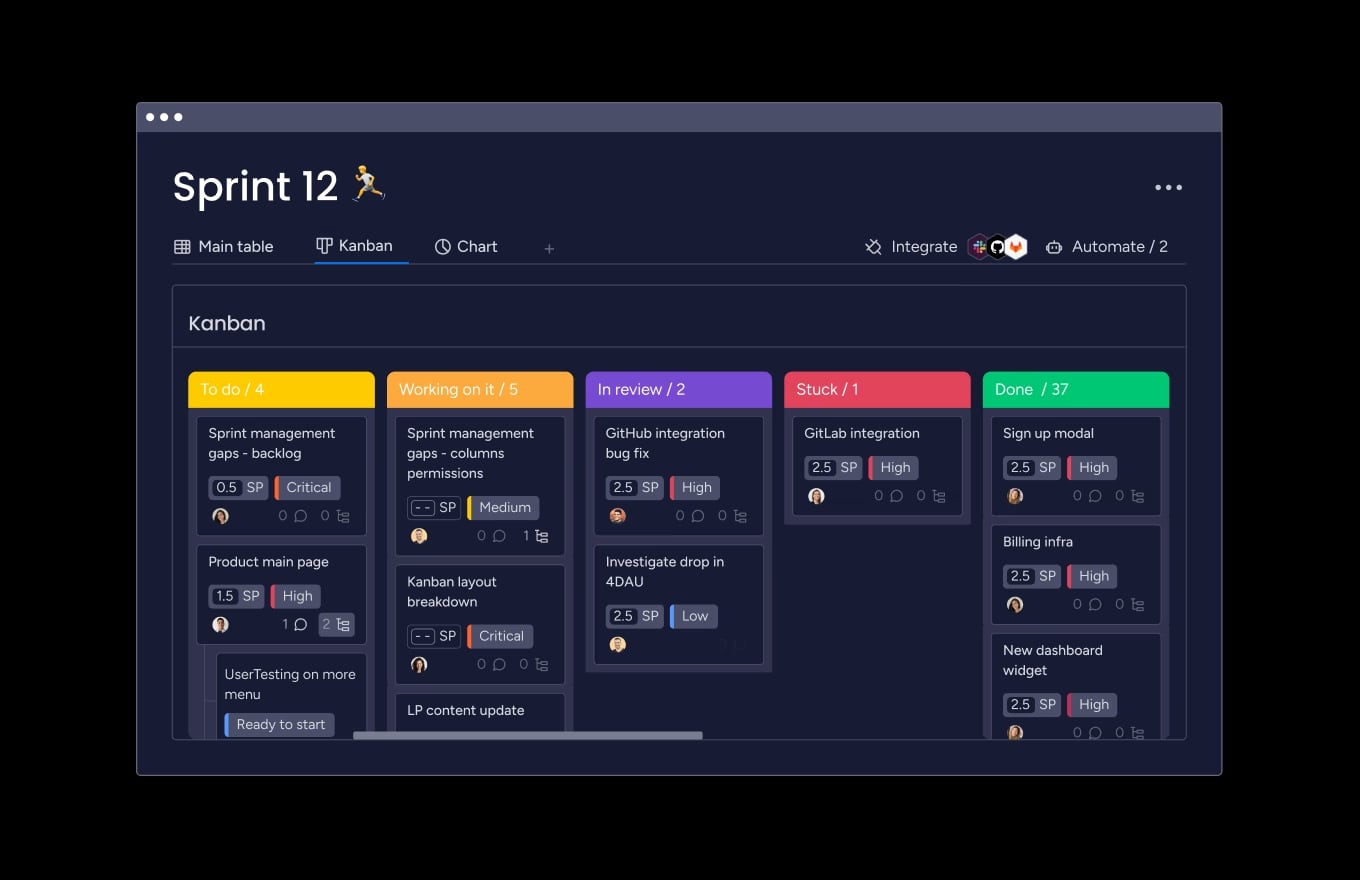
For example, in Scrum, tasks get assigned (pushed) to team members, whereas in Kanban, team members choose (pull) their tasks. However, in Scrumban, the project manager pushes tasks into the To-Do column, but team members pull tasks from there.
When to use Scrumban
Scrumban is a relatively new methodology compared to some approaches and lacks documented guiding principles. It’s best-suited for:
- Projects with changing requirements
- Continuous improvement initiatives
- Environments requiring both structure and flexibility
- Teams transitioning from Scrum to Kanban (or vice versa)
- Teams seeking to balance workload and maintain a steady flow
Critical Chain Project Management (CCPM)
Critical Chain Project Management (CCPM) is a management technique focused on efficient resource utilization to prioritize successful project completion. It aims to finish projects faster by addressing common problems like unproductive multitasking, late completion, and budget overruns.
It’s similar to the Critical Path Method (CPM). However, while Critical Path focuses on task sequences and scheduling, Critical Chain considers both task dependencies and resource constraints. It explicitly considers competing demands and adds project buffers to protect against uncertainties. It’s super critical (pun intended) for anyone doing enterprise resource planning.
When to use CCPM
CCPM is particularly useful when traditional project management methodologies struggle with resource conflicts and frequent delays or when there’s a need to significantly improve project delivery times and success rates. It’s ideal for:
- Projects with changing requirements or uncertainties
- When resource constraints are a significant factor
- Complex projects with multiple dependencies
- Industries such as construction, tech R&D, and software development
Adaptive Project Framework (APF)
The Adaptive Project Framework (APF), also known as Adaptive Project Management (APM), is an agile, flexible project management approach designed for projects with clear goals but undefined methods to achieve them.
APF requires a mindset shift from following rigid plans to embracing change and continuous adaptation. It’s beneficial for complex projects in dynamic environments where traditional approaches may struggle to accommodate evolving requirements and uncertainties.
Like other agile project management frameworks, APF requires teams to collaborate, communicate, and anticipate changes in client needs or market conditions.
When to use APF
APF is a good fit for:
- Projects with changing requirements or uncertainties
- Environments requiring flexibility and adaptability
- Projects with clear goals but undefined methods
- Situations where client involvement is crucial
- Industries experiencing rapid changes, such as technology and finance
Outcome Mapping (OM)
Outcome Mapping (OM) is a methodology for planning, monitoring, and evaluating projects that aim to bring about tangible change. Unlike other approaches, it focuses on desired outcomes — such as changes in behavior, relationships, activities, or actions of people and organizations — rather than processes or outputs.
It was designed by the grant-making organization International Development Research Centre (IDRC) to evaluate the impact of research in developing countries and consists of three stages:
- Intentional design
- Outcome and performance monitoring
- Evaluation planning
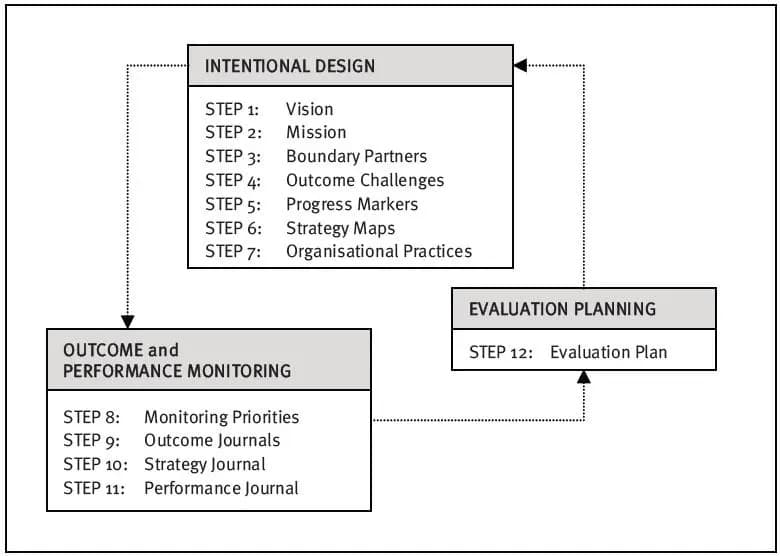
When to use OM
Outcome Mapping is ideal for:
- Projects needing to track “soft” outcomes like behavioral changes
- Projects aimed at changing behavior rather than producing deliverables
- Projects related to change and social transformation, such as international development, charity, and research
Rapid Application Development (RAD)
Rapid Application Development (RAD) is an agile software development methodology that emphasizes rapid prototyping and iterative development. It requires a skilled team of developers and designers and relies on active client participation throughout the process to succeed.
RAD projects not only benefit from faster development and delivery but also early detection and resolution of issues, reduced costs, and stakeholder satisfaction.
When to use RAD
RAD is particularly effective for:
- Projects with changing or unclear requirements
- Applications needing frequent iterations and user feedback
- Situations requiring quick delivery of working prototypes
- Projects where time-to-market is critical
- Development of user interface-intensive applications
Rational Unified Process (RUP)
Rational Unified Process (RUP) is an iterative software development framework created by Rational Software Corporation, now part of IBM. It provides a disciplined approach to assigning tasks and responsibilities within a development team to ensure the production of high-quality software that meets end-user requirements.
RUP emphasizes risk management, quality control, and iterative development to create high-quality software within predictable budgets and timeframes. It divides the project lifecycle into four phases:
- Inception: Define the project scope and business case
- Elaboration: Analyze the problem domain and establish an architectural foundation
- Construction: Develop the product
- Transition: Deliver the product to end users
If needed, you can repeat each life cycle phase until you meet the main objectives.
When to use RUP
Although flexible, RUP may be too rigid for some agile teams. It’s best-suited for:
- Complex, large-scale software projects
- Projects requiring clear documentation and traceability
- Environments needing a structured approach with some flexibility
- Projects with changing requirements or uncertainties
Integrated Project Delivery (IPD)
Integrated Project Delivery (IPD) is a collaborative construction project delivery approach involving all the key participants, such as owners, architects, contractors, and consultants. Everyone works as one team to deliver the project and share the risks and rewards among participants.
IPD uses lean manufacturing principles to reduce waste, increase productivity, avoid time overruns, enhance final product quality, and prevent conflicts between owners, architects, and contractors during construction.
When to use IPD
The IPD method is ideal for:
- Complex or long-term projects
- Projects with multi-million dollar budgets
- Stakeholders willing to share risk and reward
- When traditional project delivery methods do not yield the desired results
Precedence Diagramming Method (PDM)
The Precedence Diagramming Method (PDM) is a technique used to visually represent project activities and their relationships with each other. It uses nodes and boxes to represent activities, and arrows to show dependencies between them.
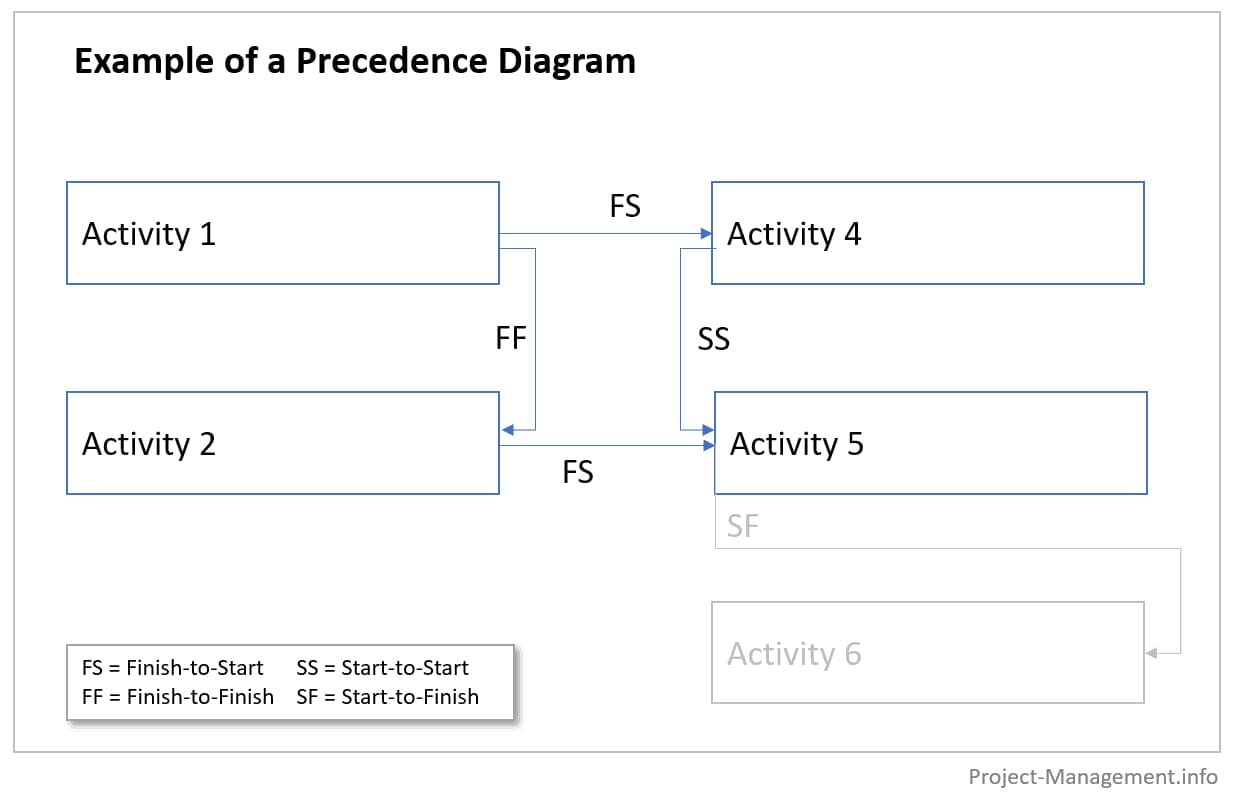
PDM can reflect four types of task dependencies:
- Finish-to-Start (FS)
- Finish-to-Finish (FF)
- Start-to-Start (SS)
- Start-to-Finish (SF)
It helps project managers visualize workflows, identify potential issues, and manage resources effectively.
When to use PDM
PDM is beneficial for:
- Identifying the critical path
- Creating a project schedule network diagram
- Managing complex projects with multiple interdependent activities
Hybrid project management methodologies
If neither the Agile nor Waterfall project management methodologies seem like the perfect fit for your project, there’s an alternative solution.
The hybrid approach combines elements of both predictive and adaptive methodologies. It allows teams to use the best aspects of each approach depending on project needs and can be customized to fit specific organizational requirements.
However, combining methodologies can present challenges. For instance, teams may need to work in unfamiliar or uncomfortable ways, and senior stakeholders may need guidance in obtaining the data they need from unfamiliar metrics.
Initially, decisions may take longer, information may need repeating several times, and teams may miss something if responsibilities are unclear. But, for experienced project managers who understand the project’s challenges and the potential for increased efficiency and flexibility, the hybrid approach makes sense.
Here are some examples of hybrid project management methodologies:
Agile-Waterfall Hybrid
- Combines elements of both Agile and Waterfall approaches
- Uses Agile for early, unpredictable phases, then transitions to a more structured Waterfall approach as the project becomes more defined
Scrum-Waterfall Hybrid
- Blends Scrum and Waterfall methodologies, like PRINCE2 Agile
- Uses Scrum to manage ongoing development and Waterfall for overall project management and deliverables
Lean-Agile Hybrid
- Integrates Lean principles with Agile methodologies
- Applies Lean concepts like continuous improvement and waste elimination alongside Agile project management practices
Lean-Waterfall Hybrid
- Combines Lean principles with the Waterfall approach
- Uses Lean to optimize processes within a structured Waterfall framework
Phased Agile-Waterfall Hybrid
- Starts with Waterfall for initial planning and research phases
- Transitions to Agile for design and development phases using sprints and Scrum ceremonies
- May return to Waterfall for final review and launch phases
Custom Hybrid
Organizations often create their own hybrid methodologies by selecting specific elements from different approaches that best suit their needs, like Scrumban. They can then tailor these to specific project types or organizational cultures
Whatever project management framework or methodology you choose, a key success factor is using the right tools.
Get startedHandle any project methodology or framework with monday work management
Built on top of monday.com Work OS, monday work management lets you tailor the platform to your project management methodology — not the other way around. Manage projects from idea to execution with your chosen approach to align project objectives, needs, and scope with company-level goals.
Project views
Visualize your data and project plans the way you need with 20+ column types — like Time Tracking, Formula, Dependency, and Workload — and 15+ board views — like Kanban, Timeline, Calendar, and Gantt.
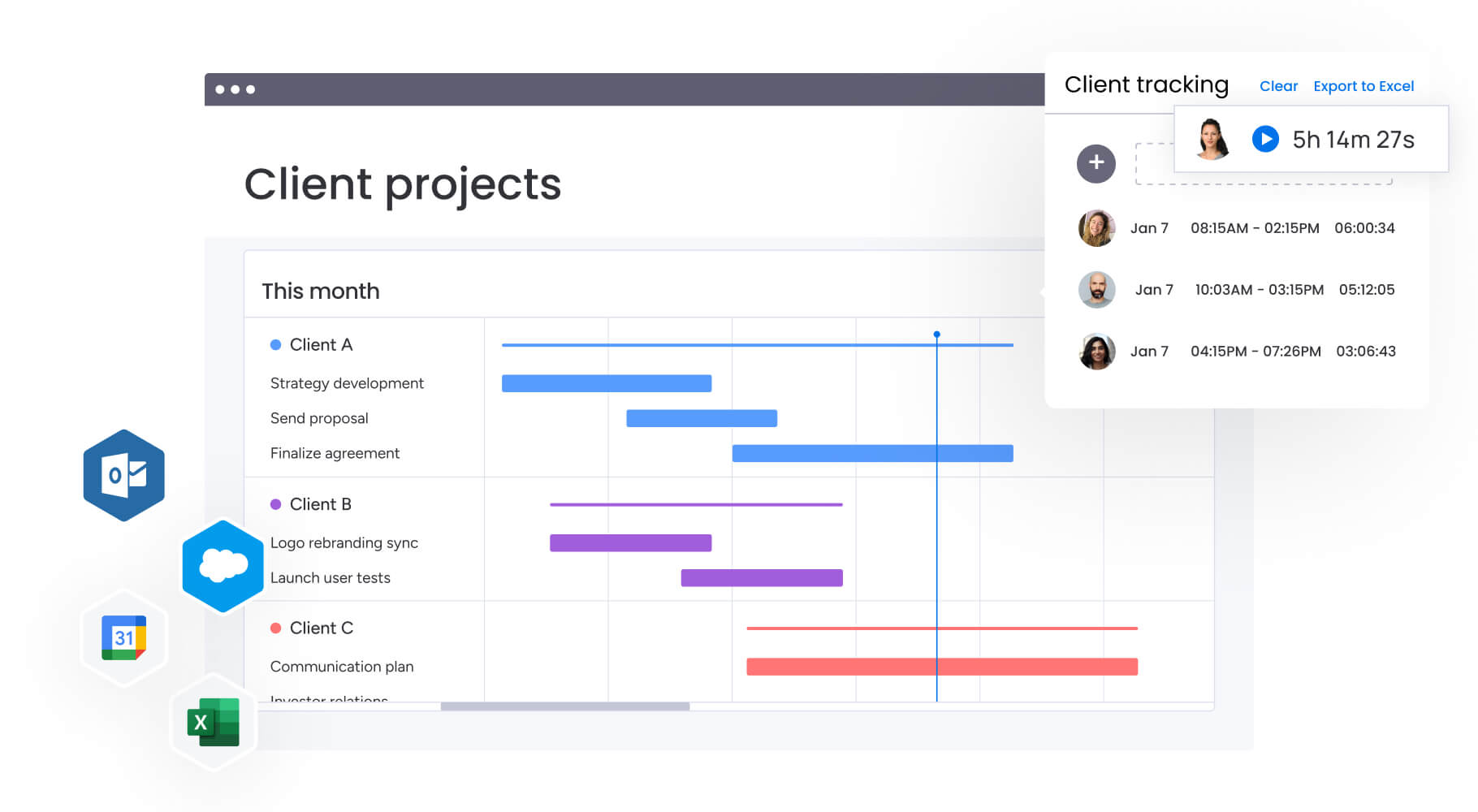
Dashboards
Automatically display live high-level project data for insights on budget, goals, schedules, resources, and more. Customize dashboards based on your needs with over 10+ drag and drop widgets, and view data the way you need to make sharper, faster decisions.
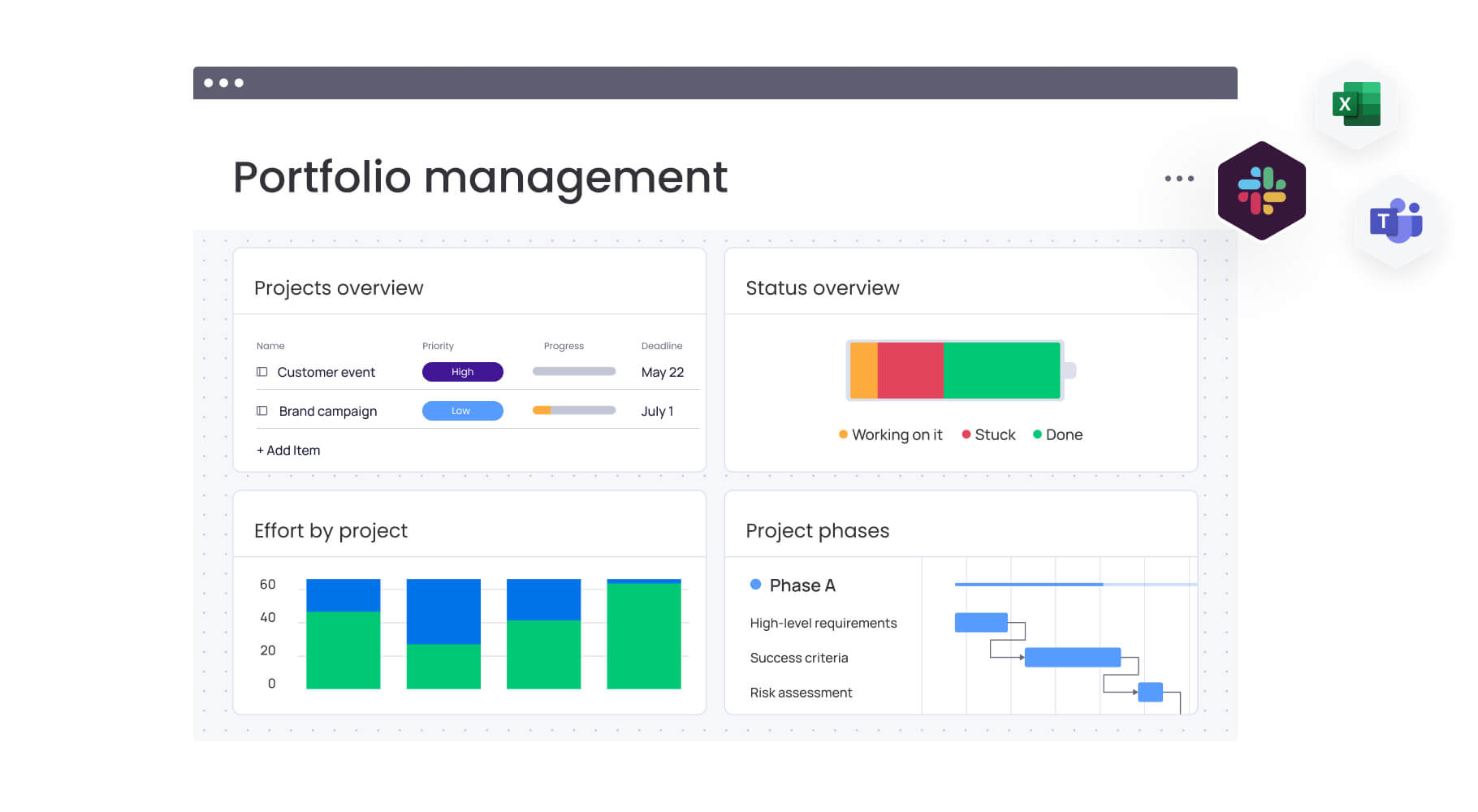
Automations
Save valuable time and start new projects faster by automating crucial elements of your work, such as creating templated project boards and sending approval notifications and reminders.
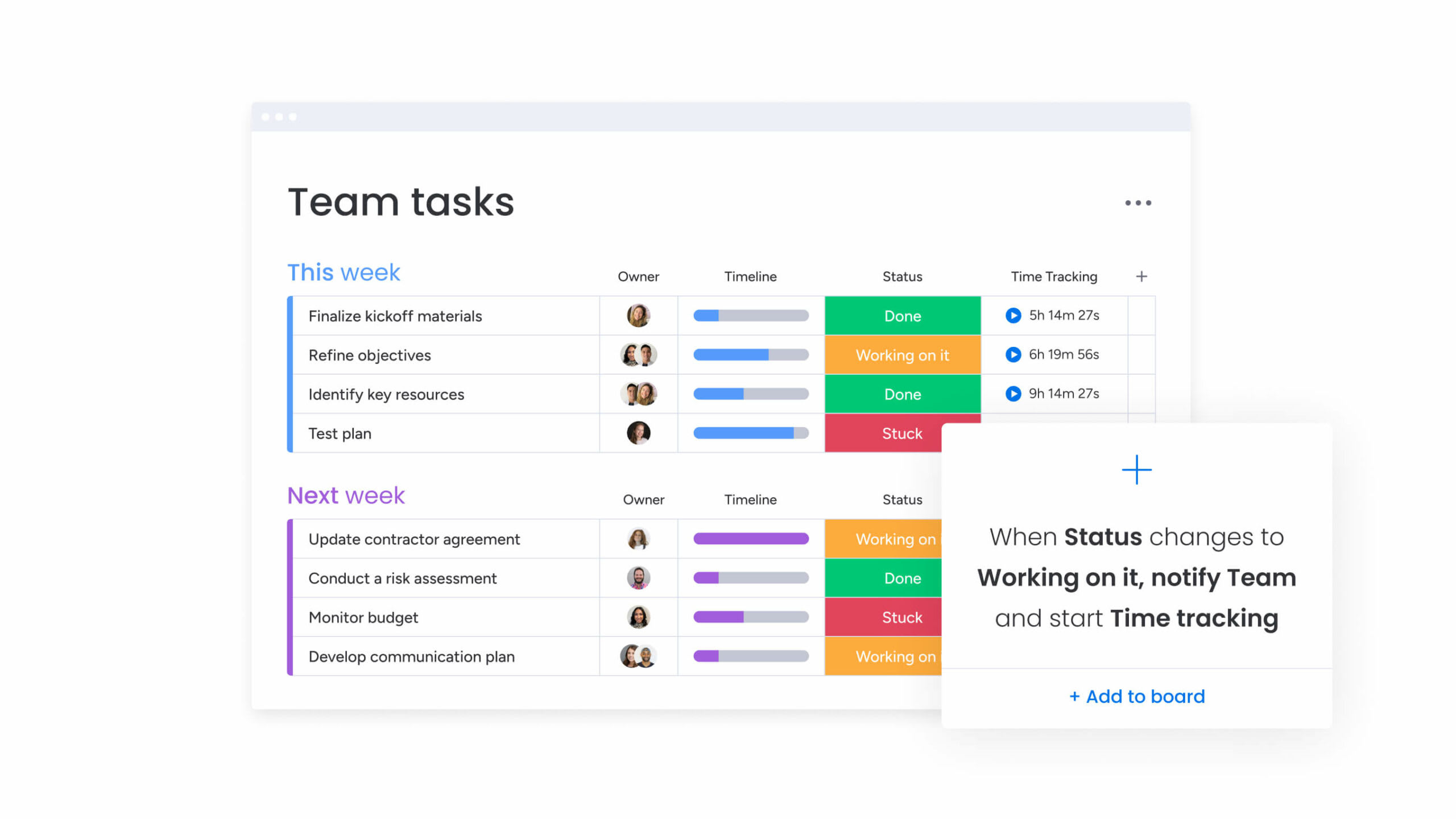
Templates
No matter which framework or methodology you use, choose from 200+ templates to make planning and executing projects easier. The project management planning template shows the tasks, timeline, and progress for each project lifecycle stage.
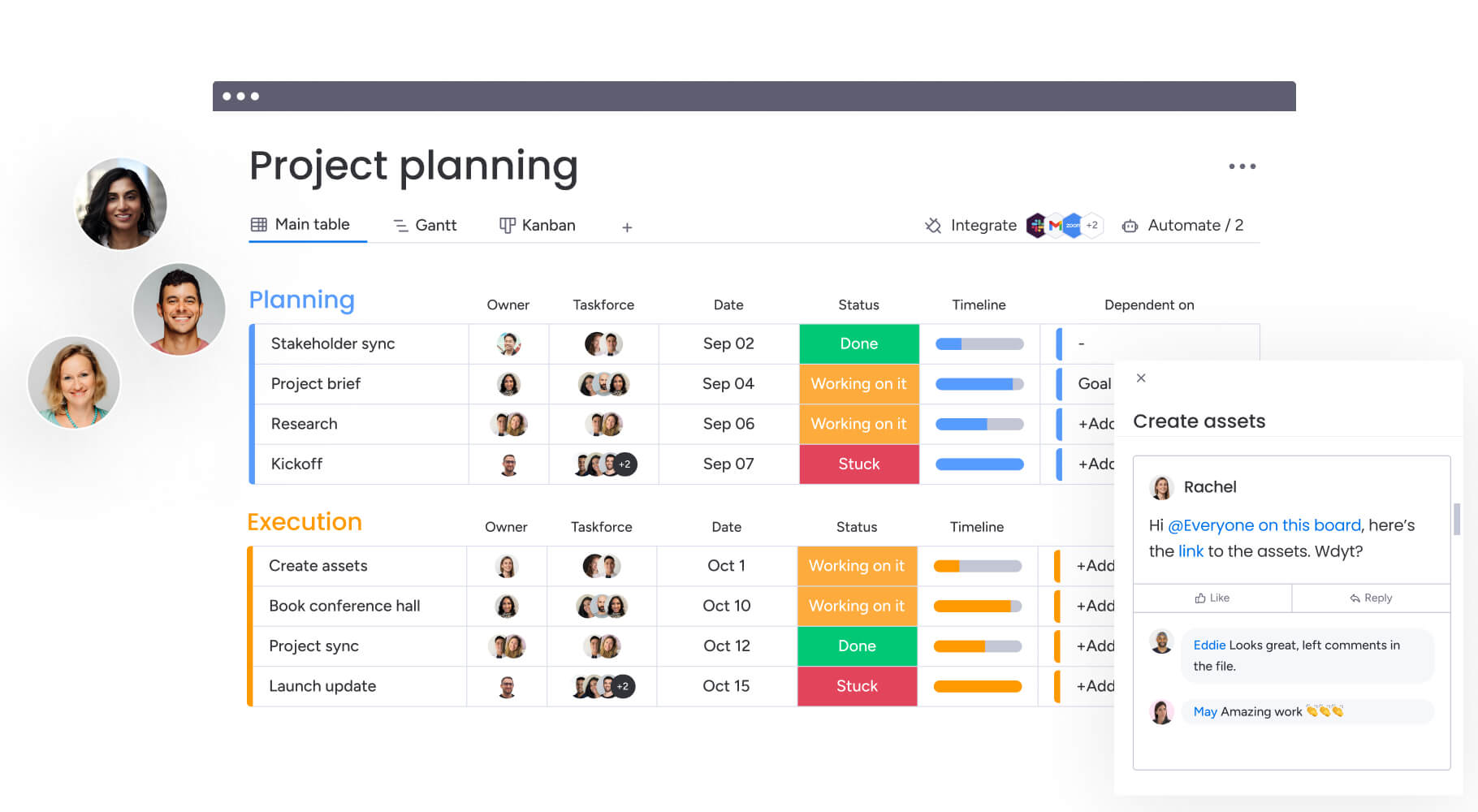
If you’re using an Agile project management methodology, try the sprint planning template or the handy sprint retrospective template, or combine views for a hybrid approach.
Integrations
Connect all the tools you already use — like Microsoft Teams, Gmail, Slack, Jira, and Salesforce — to prioritize tasks, assign workflows, and run powerful projects without switching tabs.
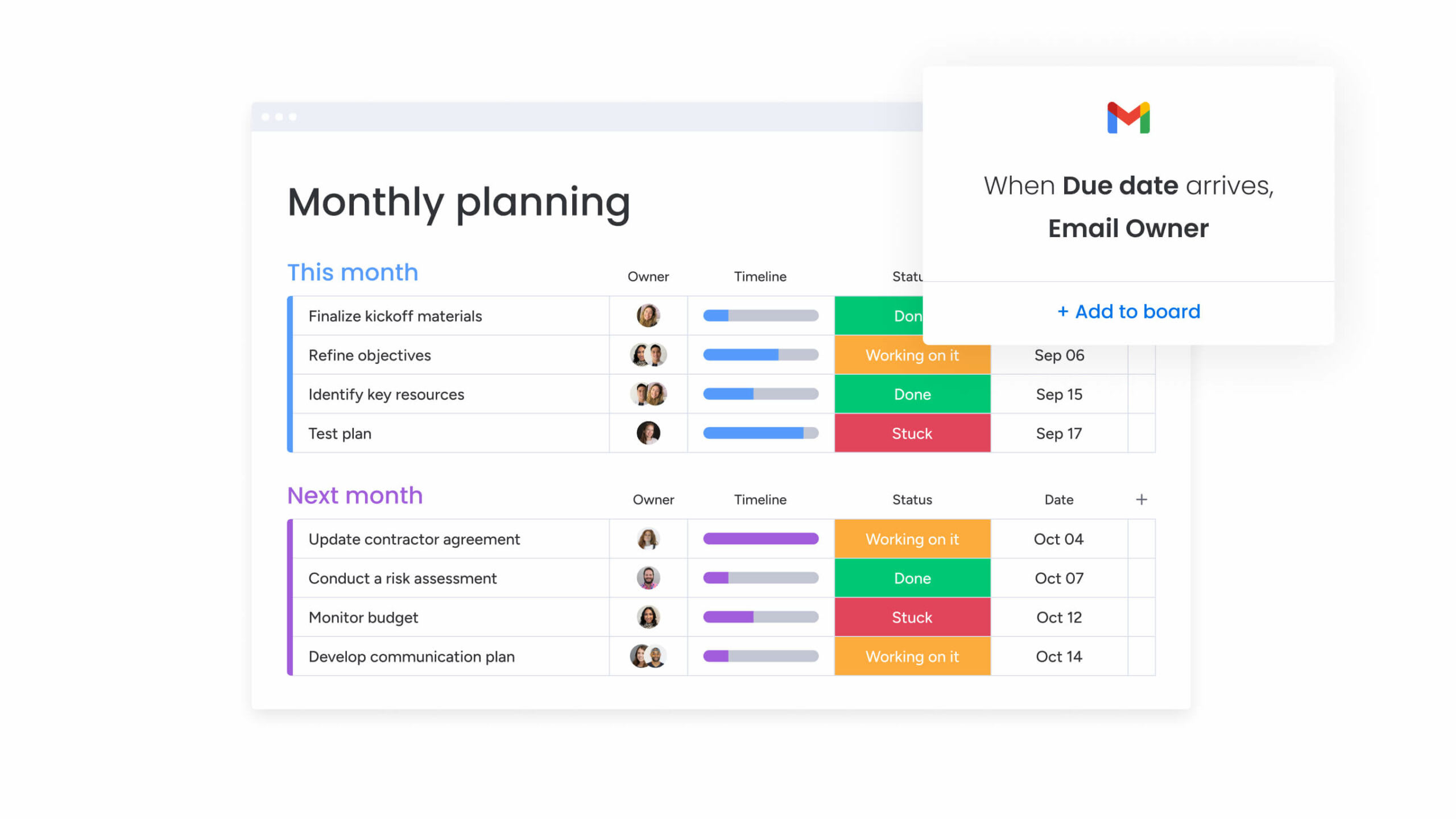
Choose the right platform for your project management methodology
There’s no one project management methodology or framework that’s best — it all comes down to using the one that best fits your project requirements and business needs.
That said, choosing the right platform can make a difference — no matter which method you use. Selecting a flexible and customizable platform like monday work management will let you adapt your approach to each project accordingly.
Try monday work management yourself with a 14-day free trial and get started with our free templates to keep on track with your chosen project management methodology.
